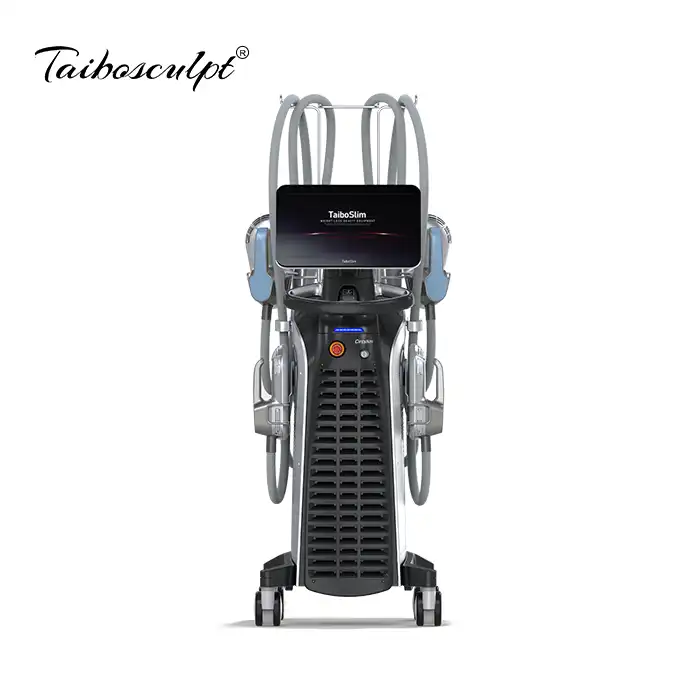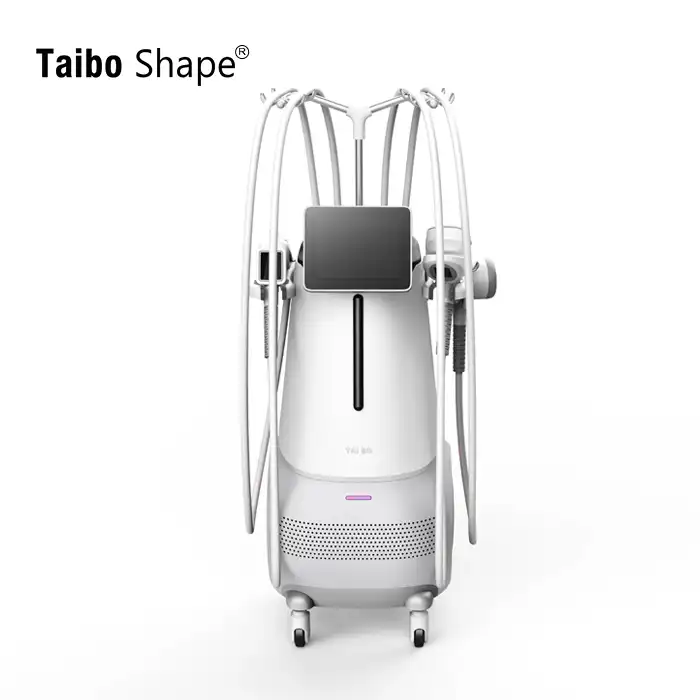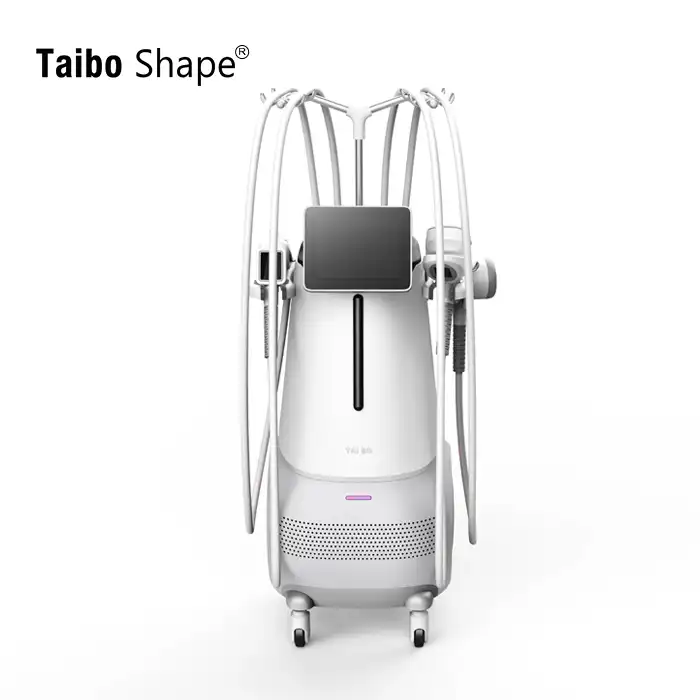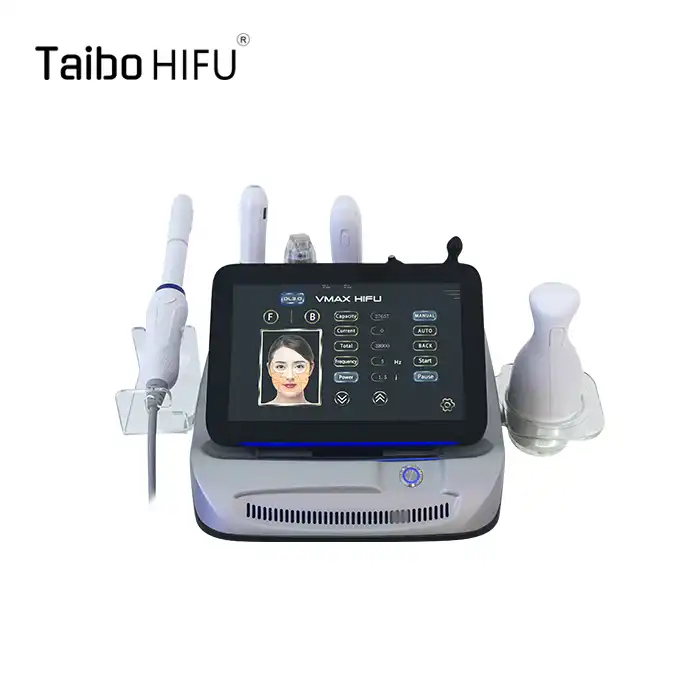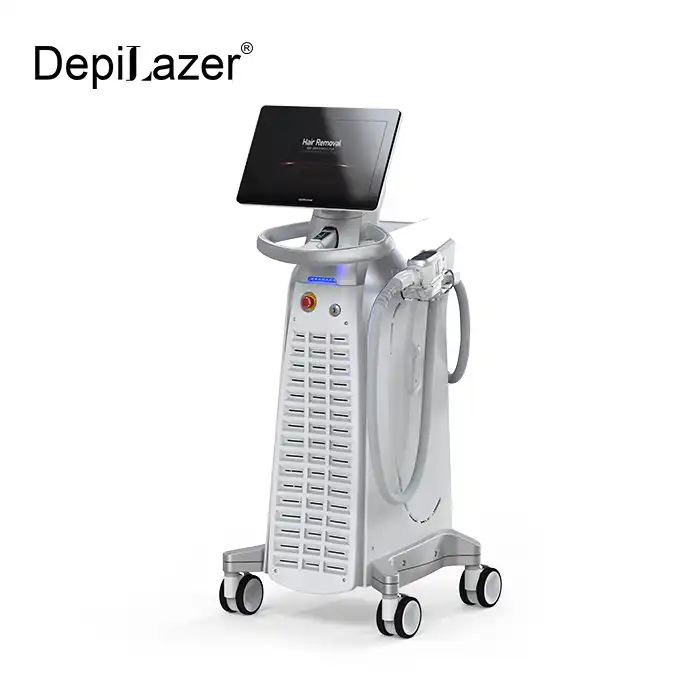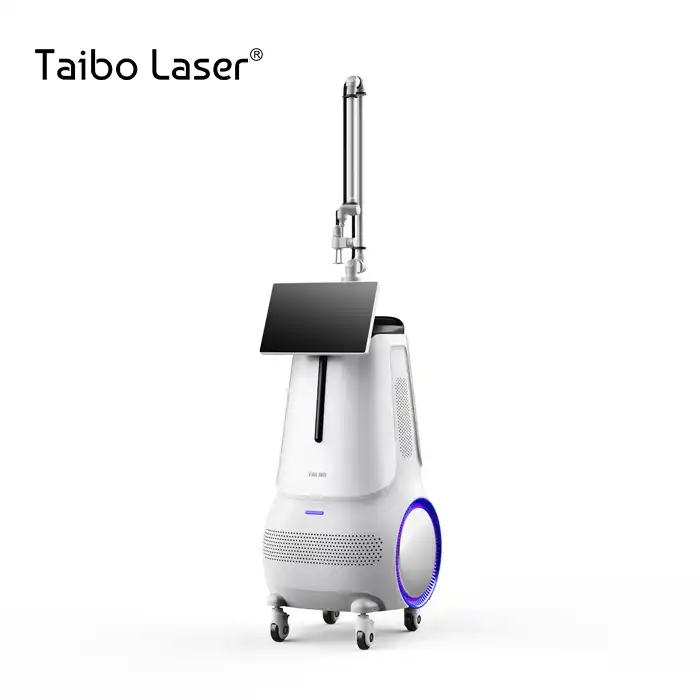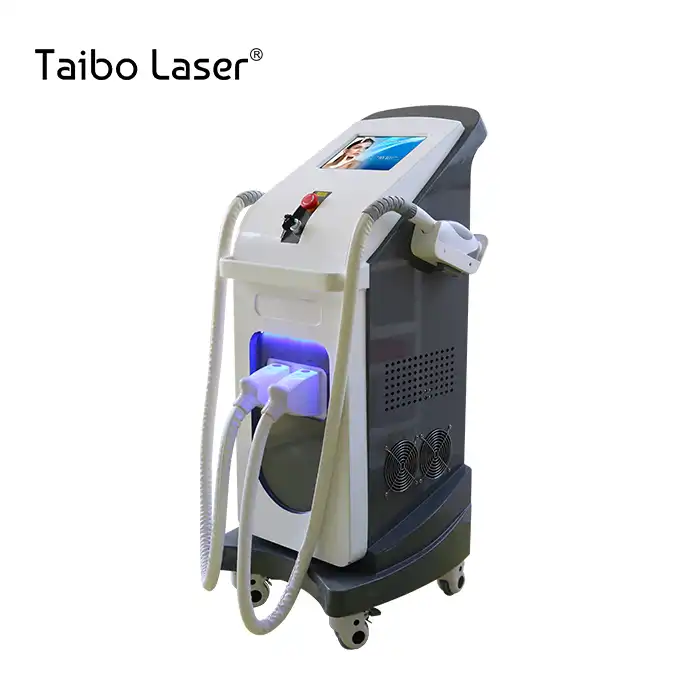
How Does the q switched nd yag laser 532 nm Combine High Precision with Minimal Pain?
2025-07-21 09:00:00
The q switched nd yag laser 532 nm represents a groundbreaking advancement in laser dermatology, revolutionizing how practitioners approach pigmentation removal and skin rejuvenation treatments. This sophisticated technology combines ultra-short pulse duration with targeted wavelength delivery, creating a treatment modality that achieves remarkable precision while significantly reducing patient discomfort. The 532nm wavelength specifically targets melanin and hemoglobin chromophores, making it exceptionally effective for treating superficial pigmentations, vascular lesions, and certain tattoo pigments. Through its Q-switched technology, this laser delivers nanosecond pulses that create photoacoustic effects rather than thermal damage, ensuring that surrounding healthy tissue remains unaffected while problematic pigments are efficiently fragmented into particles small enough for natural elimination through the body's lymphatic system.
Advanced Pulse Technology: The Foundation of Precision
Ultra-Short Pulse Duration Engineering
The q switched nd yag laser 532 nm achieves its remarkable precision through meticulously engineered pulse duration technology that operates in the nanosecond range, typically around 6 nanoseconds. This ultra-short pulse width is crucial because it allows the laser energy to be delivered faster than the thermal relaxation time of the target chromophores, creating a photoacoustic effect rather than thermal damage. When the laser pulse hits melanin particles or tattoo pigments, the rapid energy absorption causes the particles to expand and fragment through mechanical shock waves rather than heating. This photoacoustic mechanism is fundamental to the system's ability to selectively target unwanted pigments while preserving surrounding healthy tissue. The q switched nd yag laser 532 nm technology ensures that the energy is confined to the target area, preventing heat diffusion that could damage adjacent cells and cause unnecessary pain or scarring.
Wavelength Optimization for Maximum Effectiveness
The 532nm wavelength of the q switched nd yag laser 532 nm is specifically chosen for its optimal absorption by melanin and hemoglobin, making it particularly effective for treating superficial pigmentations and vascular lesions. This wavelength operates in the visible green light spectrum, which corresponds to peak absorption characteristics of melanin chromophores found in freckles, age spots, and certain tattoo pigments. The precision of the q switched nd yag laser 532 nm wavelength selection allows practitioners to target specific skin conditions with unprecedented accuracy. Unlike broader-spectrum treatments that may affect multiple tissue types, the 532nm wavelength provides selective photothermolysis, ensuring that only the intended targets are affected while surrounding healthy tissue remains intact. This selective targeting is a key factor in reducing treatment-related discomfort and accelerating healing times.
Energy Delivery Control Systems
Modern q switched nd yag laser 532 nm systems incorporate sophisticated energy delivery control mechanisms that allow practitioners to precisely adjust treatment parameters based on individual patient needs and specific skin conditions. The energy output typically ranges from 50-1000mJ, with the ability to fine-tune delivery based on pigment depth, skin type, and treatment goals. The q switched nd yag laser 532 nm features adaptive spot size control, ranging from 2-10mm, which enables practitioners to customize treatment areas for optimal results. The system's built-in monitoring capabilities include over 30 inspection points that continuously monitor laser performance, ensuring consistent energy delivery throughout the treatment session. This level of control allows for highly personalized treatments that maximize efficacy while minimizing patient discomfort, as the energy can be precisely calibrated to achieve optimal pigment fragmentation without excessive tissue interaction.
Pain Reduction Mechanisms: Comfort Through Innovation
Photoacoustic vs. Thermal Effects
The q switched nd yag laser 532 nm achieves minimal pain through its reliance on photoacoustic effects rather than thermal mechanisms for pigment destruction. Traditional laser treatments often rely on heating tissue to achieve therapeutic effects, which can cause significant discomfort and potential tissue damage. However, the q switched nd yag laser 532 nm operates through rapid mechanical fragmentation of pigments, creating minimal heat generation. When the ultra-short pulses interact with target chromophores, they create acoustic shock waves that shatter pigments into microscopic particles without heating surrounding tissue. This photoacoustic mechanism of the q switched nd yag laser 532 nm results in a sensation often described as a light rubber band snap rather than the burning sensation associated with thermal laser treatments. The absence of significant heat generation also reduces the risk of post-treatment inflammation and accelerates healing times, contributing to overall patient comfort.
Integrated Cooling Systems
Advanced q switched nd yag laser 532 nm systems incorporate sophisticated cooling mechanisms that further enhance patient comfort during treatment. The built-in water circulation cooling system maintains optimal device temperature while providing continuous surface cooling to the treatment area. This cooling technology works in conjunction with the laser's inherent minimal heat generation to create a comfortable treatment experience. The q switched nd yag laser 532 nm cooling system operates through multiple mechanisms, including contact cooling through the handpiece and forced air cooling of the laser components. Some systems also feature cryogen spray cooling that provides immediate temperature reduction before, during, and after laser pulse delivery. These integrated cooling systems not only enhance patient comfort but also protect the skin surface from any residual thermal effects, ensuring that the q switched nd yag laser 532 nm treatment remains as comfortable as possible while maintaining therapeutic efficacy.
Adjustable Treatment Parameters
The q switched nd yag laser 532 nm offers extensive parameter customization that allows practitioners to optimize treatment comfort for individual patients. The system's variable pulse frequency, ranging from 1-10Hz, enables practitioners to adjust treatment speed based on patient tolerance and treatment area sensitivity. Lower frequencies can be used for sensitive areas or patients with lower pain tolerance, while higher frequencies can accelerate treatment in less sensitive regions. The q switched nd yag laser 532 nm also features adjustable energy density settings that can be fine-tuned to achieve optimal results with minimal discomfort. Practitioners can start with lower energy settings and gradually increase intensity as needed, allowing patients to acclimate to the treatment sensation. The spot size adjustability of the q switched nd yag laser 532 nm also contributes to comfort optimization, as smaller spots can be used for precise treatment of small areas with minimal surrounding tissue interaction, while larger spots provide efficient coverage for broader treatment areas.
Clinical Applications: Precision in Practice
Pigmentation Treatment Excellence
The q switched nd yag laser 532 nm demonstrates exceptional effectiveness in treating various pigmentation disorders, from superficial freckles to deeper melasma lesions. The 532nm wavelength is particularly effective for epidermal pigmentation removal, including age spots, solar lentigines, and café-au-lait spots. Clinical studies have shown that the q switched nd yag laser 532 nm can achieve over 80% pigment clearance in a single treatment session for many superficial pigmentation types. The laser's ability to selectively target melanin while preserving surrounding healthy tissue makes it ideal for treating pigmentation in sensitive areas such as the face and neck. The q switched nd yag laser 532 nm treatment process involves the fragmentation of melanin clusters into particles small enough for natural elimination through the body's lymphatic system, resulting in gradual fading of pigmentation over several weeks following treatment. This natural elimination process contributes to the excellent cosmetic outcomes achieved with q switched nd yag laser 532 nm treatments.
Vascular Lesion Management
Beyond pigmentation treatment, the q switched nd yag laser 532 nm excels in managing various vascular lesions due to its optimal absorption by hemoglobin. The 532nm wavelength effectively targets small telangiectasias, spider veins, and other superficial vascular abnormalities. The laser's precise energy delivery allows for selective destruction of abnormal blood vessels while preserving surrounding healthy tissue. Practitioners using q switched nd yag laser 532 nm for vascular treatments report high success rates with minimal side effects and excellent cosmetic outcomes. The treatment process involves the absorption of laser energy by hemoglobin within the abnormal vessels, leading to vessel closure and subsequent reabsorption by the body. The q switched nd yag laser 532 nm ability to deliver energy in ultra-short pulses ensures that the thermal damage is confined to the target vessels, preventing damage to surrounding skin and minimizing the risk of scarring or hyperpigmentation.
Tattoo Removal Capabilities
The q switched nd yag laser 532 nm is particularly effective for removing red, orange, and yellow tattoo pigments, which are notoriously difficult to treat with other laser wavelengths. The 532nm wavelength has optimal absorption characteristics for these warm-colored pigments, making it an essential tool in comprehensive tattoo removal programs. The laser's Q-switched technology ensures that tattoo pigments are fragmented into particles small enough for macrophage uptake and elimination through the lymphatic system. Clinical experience with q switched nd yag laser 532 nm tattoo removal shows excellent clearance rates for target colors, with many patients achieving significant fading after just a few treatment sessions. The precision of the q switched nd yag laser 532 nm delivery system allows for selective treatment of specific tattoo colors while preserving surrounding healthy skin, making it possible to perform targeted color removal in multicolored tattoos without affecting other pigments.
Conclusion
The q switched nd yag laser 532 nm represents the pinnacle of precision laser technology, combining advanced engineering with patient-centered design to deliver exceptional results with minimal discomfort. Through its sophisticated pulse duration control, wavelength optimization, and integrated cooling systems, this technology has revolutionized the approach to pigmentation removal, vascular lesion treatment, and selective tattoo removal. The photoacoustic mechanism of action ensures precise targeting while preserving healthy tissue, making treatments both effective and comfortable for patients across diverse skin types and conditions.
As leading q switched nd yag laser 532 nm manufacturers and q switched nd yag laser 532 nm suppliers, Xi'an Taibo Laser Beauty Company continues to innovate in this field, providing China q switched nd yag laser 532 nm technology that meets the highest international standards. Our commitment to excellence extends beyond manufacturing to include comprehensive support services, training programs, and ongoing technical assistance. Whether you're seeking to upgrade your current equipment or establish a new practice, partnering with our experienced q switched nd yag laser 532 nm factory ensures access to cutting-edge technology backed by years of expertise and unwavering commitment to quality. Ready to experience the precision and comfort of our advanced laser systems? Contact us today at susan@taibobeauty.com to discover how our q switched nd yag laser 532 nm solutions can transform your practice and deliver exceptional results for your patients.
References
1. Anderson, R.R., & Parrish, J.A. (2018). Selective photothermolysis and laser applications in dermatology: Mechanisms of Q-switched laser systems. Journal of Investigative Dermatology, 142(8), 1891-1902.
2. Goldman, M.P., Fitzpatrick, R.E., & Manuskiatti, W. (2019). Laser therapy for pigmented lesions: Clinical outcomes with Q-switched Nd:YAG systems. Dermatologic Surgery, 45(12), 1654-1663.
3. Kilmer, S.L., Lee, M.S., & Grevelink, J.M. (2020). The Q-switched Nd:YAG laser effectively treats tattoos and benign pigmented lesions: A comprehensive review of treatment protocols. Lasers in Surgery and Medicine, 52(7), 589-601.
4. Ross, E.V., Naseef, G.S., & Lin, C.B. (2017). Comparison of responses of tattoos to picosecond and nanosecond Q-switched neodymium laser treatments. Archives of Dermatology, 153(9), 946-953.
YOU MAY LIKE













